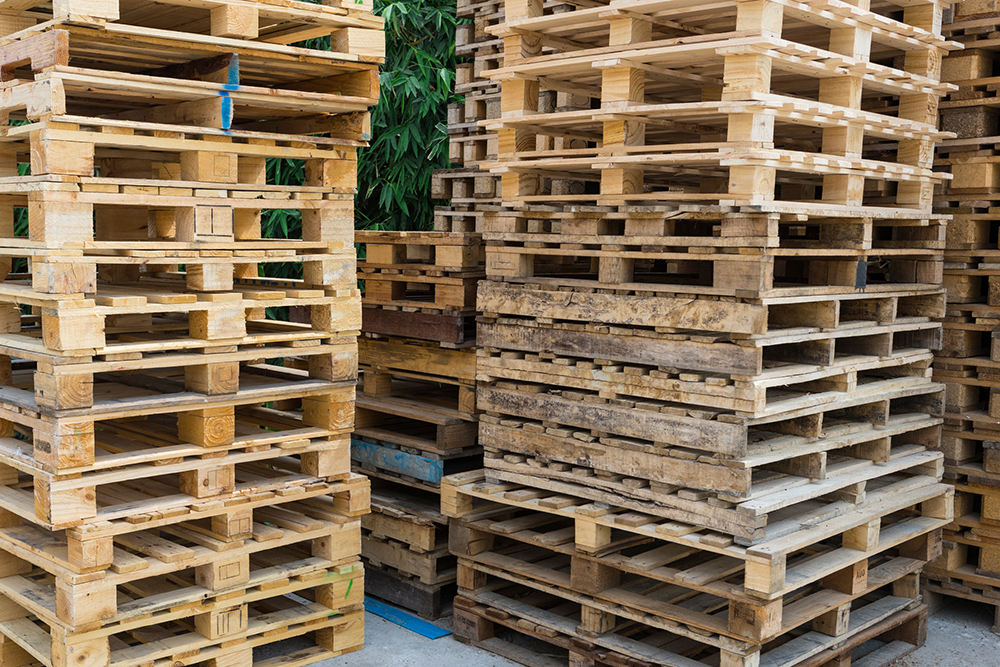New Versus Recycled Versus Remanufactured Pallets

Here’s a clear side-by-side comparison of new, recycled, and remanufactured wood pallets — useful for both cost and sustainability discussions in your industry.
1. New Wood Pallets
Definition:
Brand-new pallets built from fresh lumber to exact specifications.
Advantages:
- Consistent quality & strength – No wear or prior damage.
- Customizable – Size, wood type, and design tailored for specific loads.
- High load capacity – Best for heavy or delicate shipments.
- Longer lifespan – More cycles before repairs are needed.
Considerations:
- Higher cost – Fresh lumber prices drive costs up.
- Less sustainable – Uses more raw timber, though still renewable.
- Lead time – May require manufacturing time if not in stock.
Best For:
- Manufacturers with palletizing machinery that requires strict pallet dimension consistency.
- Industries with strict hygiene standards (food, pharma).
- Pallet purchasers with end user customers who have strict pallet requirements
Summary:
New pallets, while the most expensive pallet option, can provide a consistent shipping platform with recognized lineage, i.e., the lumber species and origin are a known quantity. New pallets will be built to exact specifications resulting in few if any production issues due to faulty pallet components or construction. Finally, many downstream pallet user distribution centers assess pallet charge backs for pallets deemed defective. New pallets can virtually eliminate these types of charge backs. Premier Pallets helped one customer offset the cost of new pallets (versus recycled) by eliminating their customer’s downstream depot charge backs. Not only were the new pallets cost neutral but Premier’s customer spent far less hours managing pallet quality and customer complaints.
2. Recycled (Refurbished/Used) Wood Pallets
Definition:
Previously used pallets that have been inspected, repaired (if needed), and put back into service.
Advantages:
- Lowest cost option – Often 30–60% cheaper than new.
- Eco-friendly – Extends pallet lifespan, reduces landfill waste.
- Quick availability – Common sizes like 48×40 are usually in stock.
- Adequate performance – Suitable for most general shipping needs.
Considerations:
- Aesthetic wear – Cosmetic blemishes, mismatched boards.
- Variable quality – Strength depends on previous use and repairs.
- Shorter lifespan – May need more frequent repairs or replacement.
Best For:
- General manufacturing, distribution, and storage.
- Businesses prioritizing cost savings and sustainability.
Summary:
The most common recycled pallet size is 48 by 40 inches. These ubiquitous pallets are available in various grades that depend on the pallet’s condition and cosmetic appearance. Premium A, AA or #1 recycled pallets are the highest grade and the most expensive but are usually a good alternative to a new pallet, as long as recycled pallets are acceptable. The specifications on these pallets require 6 inch leading edge boards and generally have thicker deck boards and stringers. At the bottom end are B grade or #2 pallets, which have multiple repairs as well as sister stringer repairs, often called double runners. These are the most cost effective pallets and are suitable for applications where pallet appearance, palletizer machinery and load bearing capacity are not as important as the cost of the pallet. Premier Pallets carries Premium A’s, regular A’s, as well as two grades of B or #2 pallets in stock at all times.
3. Remanufactured Wood Pallets
Definition:
Pallets built from a mix of dismantled pallet components (used lumber) and sometimes new components, assembled to standard or custom sizes.
Advantages:
- Custom sizes at lower cost – Good for odd-sized pallets.
- Eco-conscious – Uses reclaimed materials, reduces waste.
- Balanced quality – Can be stronger than some recycled pallets due to selective component use.
- Consistent sizing – Built to specific dimensions, unlike random recycled pallets.
Considerations:
- Mid-range cost – More than recycled, less than new.
- Mixed appearance – Combination of old and new lumber may look patchy.
- Strength varies – Dependent on quality of reclaimed boards.
Best For:
- Shipments requiring non-standard dimensions where a new pallet is not required.
- Companies balancing budget and performance.
Summary:
Remanufactured pallets, sometimes referred to as combo pallets, can be an effective cost saver when purchasing pallets especially in non-standard sizes. Many times these pallets can be built on pallet nailing machines, ensuring uniform construction while costing less than pallets built entirely from new lumber. Also, reman pallets don’t consume new lumber, making them environmentally friendly. Many of Premier’s industrial customers use remanufactured pallets.
